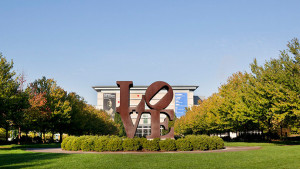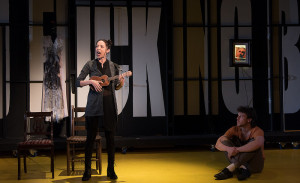In today’s Wall Street Journal “Sightings” column I look at a major American art museum that appears to be headed down the road to populist pandering. Here’s an excerpt.
* * *
Where are the fine arts in America headed in the twenty-first century? Do they have a future? If so, what shape will it take? I recently read two superficially unrelated news stories that, taken together, gave me what I suspect is a glimpse into that future—and I didn’t much like what I saw there.
The first story comes from Southern Methodist University’s National Center for Arts Research, which just released a report called “NCAR Arts Vibrancy Index II: Hotbeds of America’s Art and Culture” that purports to measure the relative “arts vibrancy” of 900-odd U.S. communities. “Vibrancy” is a fuzzy buzzword, and the NCAR does little to clear it up. It claimed in last year’s report to have put together “a set of data-based indices that highlight metropolitan areas whose arts and culture scenes pulsate with vigor and activity.” Both reports, however, are purely statistical and studiously value-neutral: “Our assessment of arts vibrancy uses multiple measures of supply, demand and public support for arts and culture on a per capita basis….Our measures of vibrancy say nothing about the quality of the art itself.”
 Fair enough—but how can you measure “vibrancy” without measuring quality? Does the NCAR believe that all art is equal? Which brings us to the second story, published last week in the Indianapolis Business Journal. It involved the Indianapolis Museum of Art, which recently conducted an online survey in which participants were asked to vote on which “potential upcoming exhibitions” interested them most. The choices included “The Art of Forgery,” “Hot Cars, High Fashion, Cool Stuff,” “Orchids” and “Rise of Robotics,” and the participants were asked to say “how likely” they would be to visit the IMA in order to view them.
Fair enough—but how can you measure “vibrancy” without measuring quality? Does the NCAR believe that all art is equal? Which brings us to the second story, published last week in the Indianapolis Business Journal. It involved the Indianapolis Museum of Art, which recently conducted an online survey in which participants were asked to vote on which “potential upcoming exhibitions” interested them most. The choices included “The Art of Forgery,” “Hot Cars, High Fashion, Cool Stuff,” “Orchids” and “Rise of Robotics,” and the participants were asked to say “how likely” they would be to visit the IMA in order to view them.
According to Stephanie Perry, the IMA’s public relations manager, “We’re on a new road trying new things….this is part of the process to better get to know our guests and incorporate guest opinions into what we do.” That’s definitely a new road, not just for the IMA but for art museums in general. Time was when they operated on a take-it-or-leave-it basis, proceeding on the assumption that museums are teaching institutions whose curators know more about art than their patrons….
All this used to apply to the IMA, whose 54,000-work collection contains such indisputably major paintings as Cézanne’s “House in Provence” and van Gogh’s “Enclosed Field with Peasant.” But times have changed, and nothing is more illustrative of the nature of those changes than the following press release: “The Indianapolis Museum of Art will tee off its summer season on May 6 with a new interactive art experience—an artist-designed putt-putt course set within the beauty of the IMA campus. Mini Golf at the IMA combines original art with playful competition….”
Believe me, I’m all for exposing more people to the fine arts. Yet I wonder: Exactly how will the IMA’s putt-putt golf course make Indianapolis a more artistically “vibrant” community?…
* * *
Read the whole thing here.


 •
• 